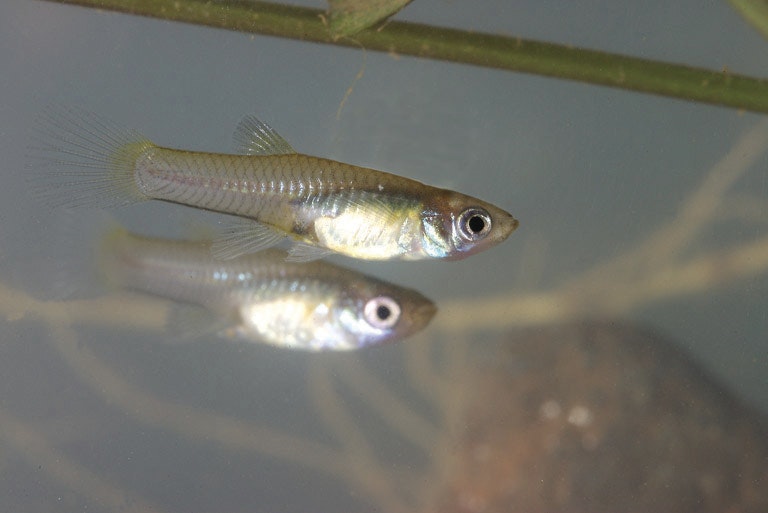Mosquitofish

Mosquitofish are available for delivery or pickup until October 15, 2025.
About Mosquitofish
Mosquitofish, (Gambusia affinis) are native to the southern and eastern parts of the United States. They were introduced to California in the early 1920's for the control of mosquito larvae. Mosquitofish continue to be an important component of our mosquito control program, and are one of the most effective ways of controlling mosquitoes without the use of chemical insecticides.
Biology:
- Mosquitofish bear live young (they do not lay eggs) and produce new broods of up to 100 young at intervals of about six weeks throughout the summer.
- Young mosquitofish are approximately 1/4 of an inch long, and may grow to nearly three inches.
- Each day, mosquitofish may consume up to three times their body weight in mosquito larvae- for an adult fish, this may be up to 500 larvae per day!
- During the winter, mosquitofish move to the bottom of the water column, become inactive, and do not feed. In most cases, they will survive the winter and become active in the spring when temperatures rise.
Care of fish:
- Mosquitofish living in established ponds typically do not require additional feeding.
- If mosquitofish are placed in a newly-constructed or recently cleaned water feature, supplemental feeding of fish flakes, crackers, stale bread or crumbled dog food may be necessary.
- If mosquito larvae are present, supplemental feeding of fish may decrease the effectiveness of the mosquitofish.
Considerations for stocking fish:
- Mosquitofish are appropriate for use in ornamental ponds, water troughs, wine barrels, neglected swimming pools and other man-made water sources with a minimum depth of 18 inches.
- Mosquitofish typically do not thrive in heavily shaded locations.
- Abundant leaf litter that falls into a pond may caused the pH level of the water to become lethal to the fish.
- District personnel do not place mosquitofish in sources known or thought to be habitats for endangered or threatened species. Special consideration must be taken when stocking fish in sources where the potential for migration into endangered or threatened species' habitats exists.
- Do not stock mosquitofish in areas that may overflow into U.S. waterways (creeks, streams, rivers, etc.).
- It is against California Department of Fish & Game regulations for private citizens to plant mosquitofish in water of the state without a permit (Title 14 CCR, Fish and Game Code, Section 1.63, Section 6400, and Section 238.5)
How to obtain mosquitofish:
- Come to our office: Mosquitofish can be picked up at our office Monday through Friday 7: 00 a.m. - 3:30 p.m. The office is closed for lunch 11:30 a.m. - 12:30 p.m. The District office is located at 595 Helman Lane, Cotati CA.
- Request delivery: The District offers free delivery of mosquitofish. There is no need to be home, the technician will stock your pond or water feature and leave a note on your door. To request delivery please call our office at 707-285-2200 or place a service request online.
Sample mosquitofish stocking rates:
Ornamental pond: 4 to 6 fish
Swimming pool: 10 to 15 fish
Wine barrel: 3 to 4 fish
Water trough: 4 to 6 fish
